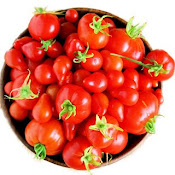 Ben, my husband, about to begin his third phase of training as a Marine Officer, has one more obstacle to overcome: a 14-hour “field exercise.” Although I can’t say I know all the details, I do know he’ll be hiking through the woods of Quantico while periodically being attacked and ambushed. Ground fighting will ensue. At 0500 tomorrow, the madness begins.
Ben, my husband, about to begin his third phase of training as a Marine Officer, has one more obstacle to overcome: a 14-hour “field exercise.” Although I can’t say I know all the details, I do know he’ll be hiking through the woods of Quantico while periodically being attacked and ambushed. Ground fighting will ensue. At 0500 tomorrow, the madness begins.Luckily, he has the proper fuel — some homemade granola bars. While I'm not sure he'll actually be able to take these with him tomorrow — I believe the early morning swim would ruin them — he always has a few on hand for when his daily activities interrupt mealtimes.
For these bars, I first have to credit my sister, Little Lindis, for being an exhausted fourth year medical school student with little time during the day for even a snack, let alone time in the evening to make herself more than popcorn and boiled hotdogs for dinner. Upon hearing about this demanding schedule, my mother of course would not stand for it and decided to make for her firstboorn a delectable and portable snack. Lindis' overwhelmingly positive response encouraged my mother to make some for Ben too, also often in need of a quick boost in the middle of the day.
Alas, the middle child could only experience this delicacy by testing the recipe herself. (JK Mom, you make me lots of goodies too...just not granola bars.) And I’m glad I had to learn the recipe myself for a few reasons. For one, I had never cooked with brown rice syrup or natural cane sugar — two sweeteners that enter the bloodstream more slowly than refined sugars, causing less of a spike in blood sugar levels. Second, the recipe requires no baking — it couldn’t be simpler, really. And finally, the flavors in these bars can be adapted in so many ways: any nut or dried fruit can replace the almonds and the cranberries, and while I haven’t tried this yet, I think a few chocolate chips or chopped pretzels would make nice additions as well.
My sister stores her granola bars in the freezer, but then again, she freezes everything — the door can barely stay shut. Also, I think the Quantico mail system proved freezing these bars to be unnecessary. My mother once mailed Ben a package filled with her homemade powerbars, and he received them, no joke, a month later. The bars tasted delicious nonetheless. (My mother had wrapped each bar very tightly in plastic wrap, but still, a month is a long time.) Ben gobbled them up.
 Cranberry-Almond Bars
Cranberry-Almond BarsAdapted from Heidi Swanson’s 101cookbooks.com
Yield = 16 bars
1¼ C. sliced almonds
1½ C. puffed brown rice cereal
1¼ C. rolled oats
1 C. dried cranberries, chopped
½ C. oat bran
3 T. finely chopped crystallized ginger
1 C. brown rice syrup
¼ C. natural cane sugar
½ tsp. salt
1 tsp. pure vanilla
Preheat the oven to 350ºF. Spread the almonds on a baking sheet and place in the oven for about 9 minutes, until fragrant and golden. Let cool, then coarsely chop. Transfer to a large bowl, and add the cereal, oats, cranberries, bran and ginger. Toss well.
Lightly spray a 9-by-13-inch baking dish with cooking spray. In a small saucepan, combine the brown rice syrup, cane sugar and salt and bring to a boil over moderate heat. Cook, stirring occasionally, until the mixture is slightly thickened, about 4 minutes. Remove from the heat and stir in the vanilla. Pour the syrup into the rice-oat mixture and toss to coat thoroughly. Transfer the mixture to the prepared dish and pack lightly with a spatula greased with cooking spray. Let cool for at least 45 minutes before cutting into 16 bars.
Note: The original recipe called for walnuts instead of almonds. Any nut can be substituted for the walnuts as can any dried fruit for the cranberries. The bars can be wrapped individually in plastic wrap, and stored in an airtight container for up to 4 days. They freeze well also.








































































































































































